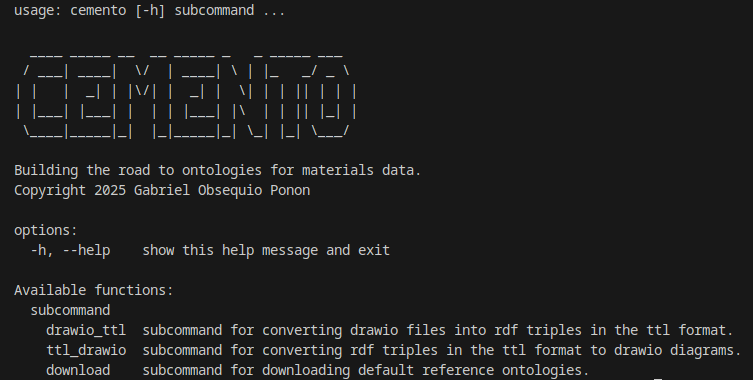Quickstart#
NOTE: It is recommended you install in a python environment. If you do not know how to set up a virtual environment, please refer to this link or check out python’s instructions.
Before converting#
Install cemento with pip.
warning The CEMENTO package only supports python versions >=3.10.
(.venv) $ pip install cemento
Run the following to see if it’s properly installed:
(.venv) $ cemento --help
It should show the following:

Download the Example#
Clone the official repo to get the example. Prefer the master branch:
(.venv) $ git pull https://github.com/Gabbyton/CEMENTO.git
(.venv) $ cd CEMENTO/examples/
There should be two files happy-example.drawio and happy-example.ttl
Converting from draw.io to .ttl#
Inside the examples folder, run the following command:
(.venv) $ cemento drawio_ttl happy-example.drawio sample.ttl
Converting from .ttl to draw.io#
Similar to the above, run the following command:
(.venv) $ cemento ttl_drawio happy-example.ttl sample.drawio
Help message#
If you get lost, there is always:
(.venv) $ cemento --help
(.venv) $ cemento drawio_ttl --help
(.venv) $ cemento ttl_drawio --help
Check output#
Congratulations! If you made it to this point, you’ve managed to convert your files from draw.io to .ttl and back. Compare the results you get with those in happy-example.drawio and happy-example.ttl respectively. Note that the diagram will not be the exact same look, but the connections and terms should all be the same.
What now?#
You can now start converting YOUR diagrams from draw.io to turtle format and vice versa! To read more about other cool features, start with the User Guide.